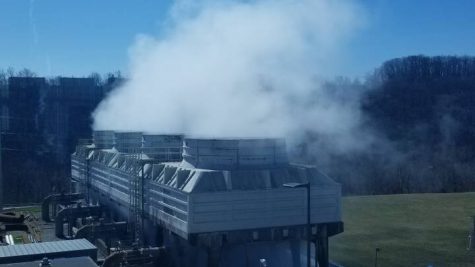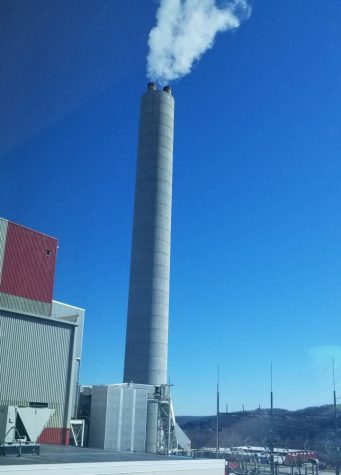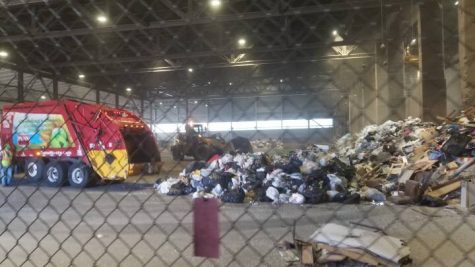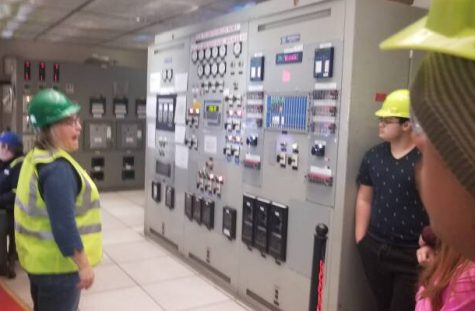Environmental Science Students Learn about Waste
April 2, 2019
Trash, heavy machines, loud noises and garbage trucks come to mind when “solid waste” is mentioned.
York County Solid Waste Authority, known as YCSWA, is not all that one thinks it is.
From trash disposal to energy production, York Waste is an important part of the county.

The Advanced Placement Environmental Science class (APES) took a trip to tour the facility on Tuesday, March 26.
At first glance, the large towers shooting into the air look like they give off smoke, but they don’t.
Because York Waste creates energy from the combustion of municipal garbage, the “smoke” coming from the stacks is something else.
Senior Josh Alwine attended the field trip.

“They actually are very helpful to the environment… [they] mainly release steam,” said Alwine.
The steam comes from the Waste-to-Energy part of the plant.
Alwine has learned a lot from this trip.
“We went there because in our Environmental Science class. We are learning about different ways energy is made, as well as trash and various ways humans handle it,” said Alwine.
Senior Anna Kirby was surprised about the steam from the stacks.
“They have said a small amount of pollution released that one puff of smoke from a cigarette is 30 times more than the pollution they produce,” said Kirby.
From taking a tour of YCSWA, the students gained insight into how waste-energy production works.

“While on the tour, we saw the area where they process the trash, the different machines they use to turn it into energy and the control room to command the whole process,” said Alwine.
Senior Joshua Hartsock also went on the trip.
“The Waste-to-Energy facility is converting waste in the surrounding area into energy in the form of electricity, and then that electricity is distributed throughout the grid,” said Hartsock. “A statistic they gave us was that they can power 20,000 homes, 24/7, all year.”
The facility aims to lower the amount of waste that goes into landfills in the area and looks ahead into the future.
“The YCSWA is planning on expanding their facility in size in order to process more trash and generate more energy,” said Hartsock.

This would give them the power to provide even more electricity to the surrounding areas.
The Environmental Science class explores solutions for the destruction that humans cause on Earth.
“York is expanding in population and has been for many years now,” said Hartsock. “So being able to take waste and turn it into clean energy will be vital in powering the new buildings to come.”
Kirby heard about their building plans.
“The plant is working on opening a new sector where they use the ash that is produced in the main building,” said Kirby. “They are going to use it for things like asphalt and paving.”
The trip to York County Solid Waste Authority proved to be an eye-opening and informative experience for AP Environmental Science students.
Not only does the county dispose of our trash for the area, but they help to power the homes too.




